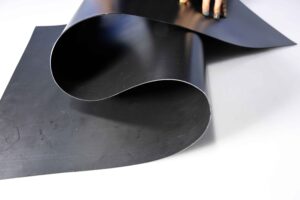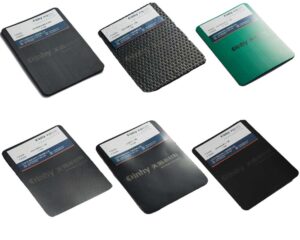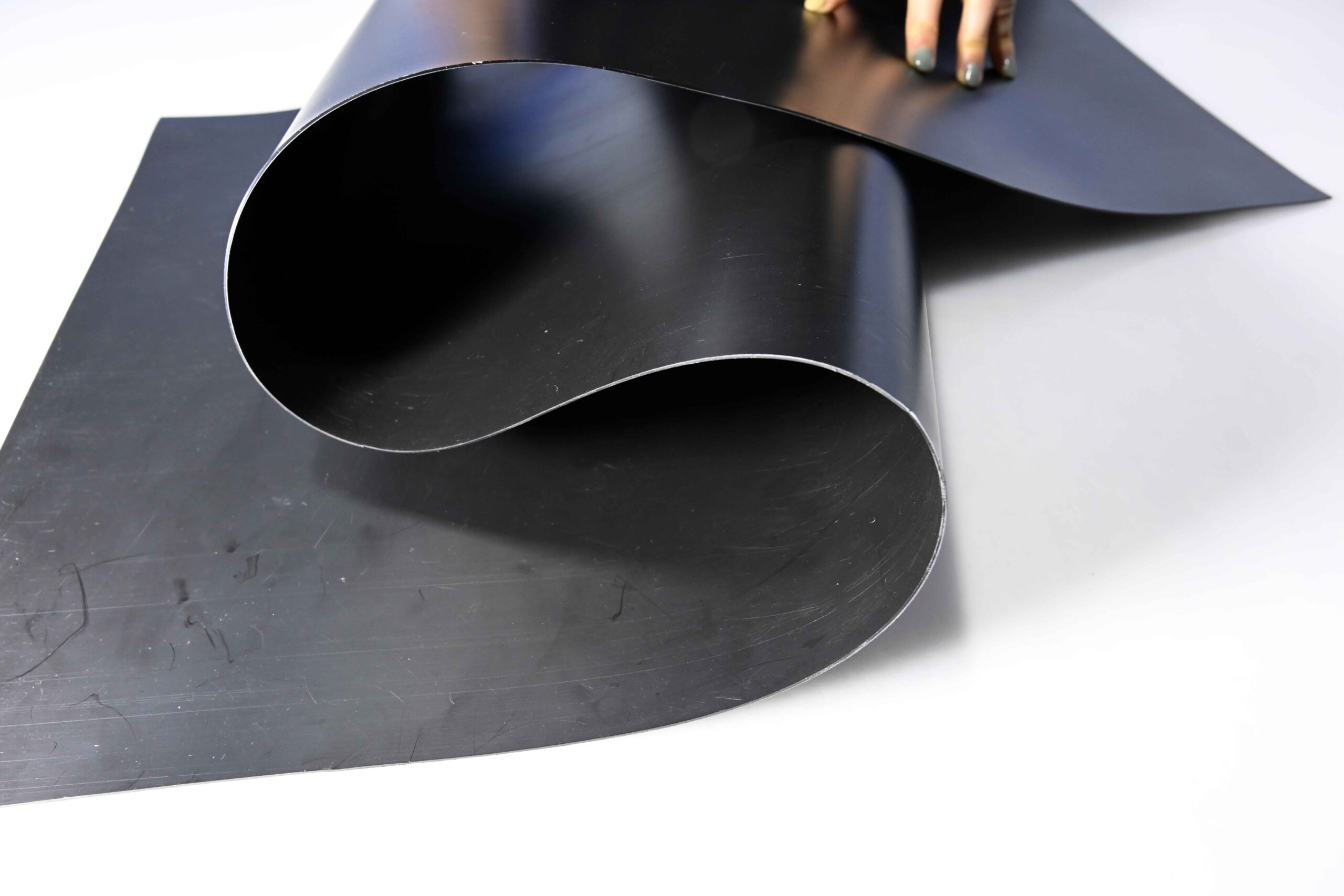Geomembrane is a material used for soil seepage prevention, waterproofing and isolation.
So what is the process of using geomembrane?
Preparation: Before starting to use the geomembrane, it is necessary to ensure that the soil surface in the construction area is level and cleaned. Remove objects such as sharp objects, gravel, and weeds that may cause damage to the geomembrane.
Geomembrane deployment: Spread the geomembrane over the construction area, cut and adjust as needed. Make sure that the membrane is completely covered and has no obvious gaps or overlaps.
Fixing the geomembrane: Fix the geomembrane to the edges and corners of the construction area using fixing devices such as nails, staples or weights. This prevents the geomembrane from shifting due to wind or construction operations.
Joining seams: If the geomembrane needs to be joined to cover a larger area, the seams will need to be joined using methods such as welding, adhesives or mechanical connectors. Make sure the connections are tight and that there are no leaks.
Auxiliary work: According to specific needs, complete other auxiliary work on the geomembrane, such as soil mound cushion, turf laying or construction of other engineering structures.
Inspection and Maintenance: After the installation of the geomembrane is completed, a comprehensive inspection is performed to ensure that the membrane is undamaged and installed correctly. Check the condition of the geomembrane regularly and address any damage or leaks promptly.
It should be noted that the specific application method of geomembrane may vary depending on the construction environment, soil conditions and engineering requirements. Before using a geomembrane, it is best to refer to the manufacturer’s instructions and recommendations and follow relevant construction codes and standards.
If you are not sure about the use and installation of geomembrane, it is recommended to consult professional engineers or professionals engaged in related construction for advice and guidance.

Geomembrane welding steps
Geomembrane welding is a process in which two segments of a geomembrane (also known as a geomembrane) are joined together by thermal welding techniques. Welding can effectively join and seal the seams of geomembranes to provide functions such as waterproofing, impermeability or insulation.
The following are the general steps of geomembrane welding:
Preparation: Make sure the surface of the geomembrane to be welded is clean and free of impurities. Clean off dust, dirt and humidity that may affect weld quality.
Installation and positioning: Place the two geomembrane segments to be welded correctly on the welding area according to the design requirements, and fix them as needed.
Preheating: Use a preheating tool such as a heat gun to preheat the interface area. The preheat temperature should be based on the geomembrane material type and thickness and is usually within the manufacturer’s recommendations.
Heat welding: Once the proper preheat temperature is reached, welding can begin. Apply a heating element (usually the nozzle of a heat gun or a soldering iron) to the geomembrane interface to heat and soften it.
Bonding pressure: Appropriate pressure is applied to the molten geomembrane interface to make the two segments firmly bond together. During the welding process, a certain welding speed and uniform pressure distribution should be maintained to ensure good weld quality.
Cooling and solidification: After the welding is completed, keep the weld to cool for a period of time until the weld is completely cooled and solidified. This helps ensure the stability and tightness of the welded joint.
Please note that geomembrane welding requires certain expertise and skills to ensure the quality and reliability of the weld. For larger or complex welding tasks, it is recommended that they be carried out by experienced professional applicators.

About Us
Shandong Tianhai New Material is a new material company located in Shandong Province, China. The company is mainly engaged in the R&D, production and sales of geosynthetics and building waterproofing materials.
Shandong Tianhai New Materials focuses on the field of geosynthetics, providing a variety of solutions and products, including geotextiles, geomembranes, geogrids, geotubes, etc.
These products are widely used in civil engineering, environmental engineering, water conservancy engineering, traffic engineering and other fields to enhance soil, strengthen structure, drainage isolation and other functions.
In addition to geosynthetics, Shandong Tianhai New Materials is also involved in the field of building waterproof materials, providing high-quality waterproof products and solutions.
Their waterproof materials include waterproof membranes, waterproof coatings, waterproof adhesives, etc., and are widely used in projects such as construction engineering, underground engineering, and infrastructure construction.
As a technology-leading new material company, Shandong Tianhai New Materials is committed to continuous innovation and product quality improvement, and has established a good reputation in the industry. Adhering to the principles of high quality, reliability and environmental friendliness, they provide customers with quality products and services.
Contact us
[wpforms id=”40″]
Author
-

Founded in 2002, Tinhy's team focuses on the manufacturing, marketing, installation, application and research and development of geosynthetic materials.
View all posts




